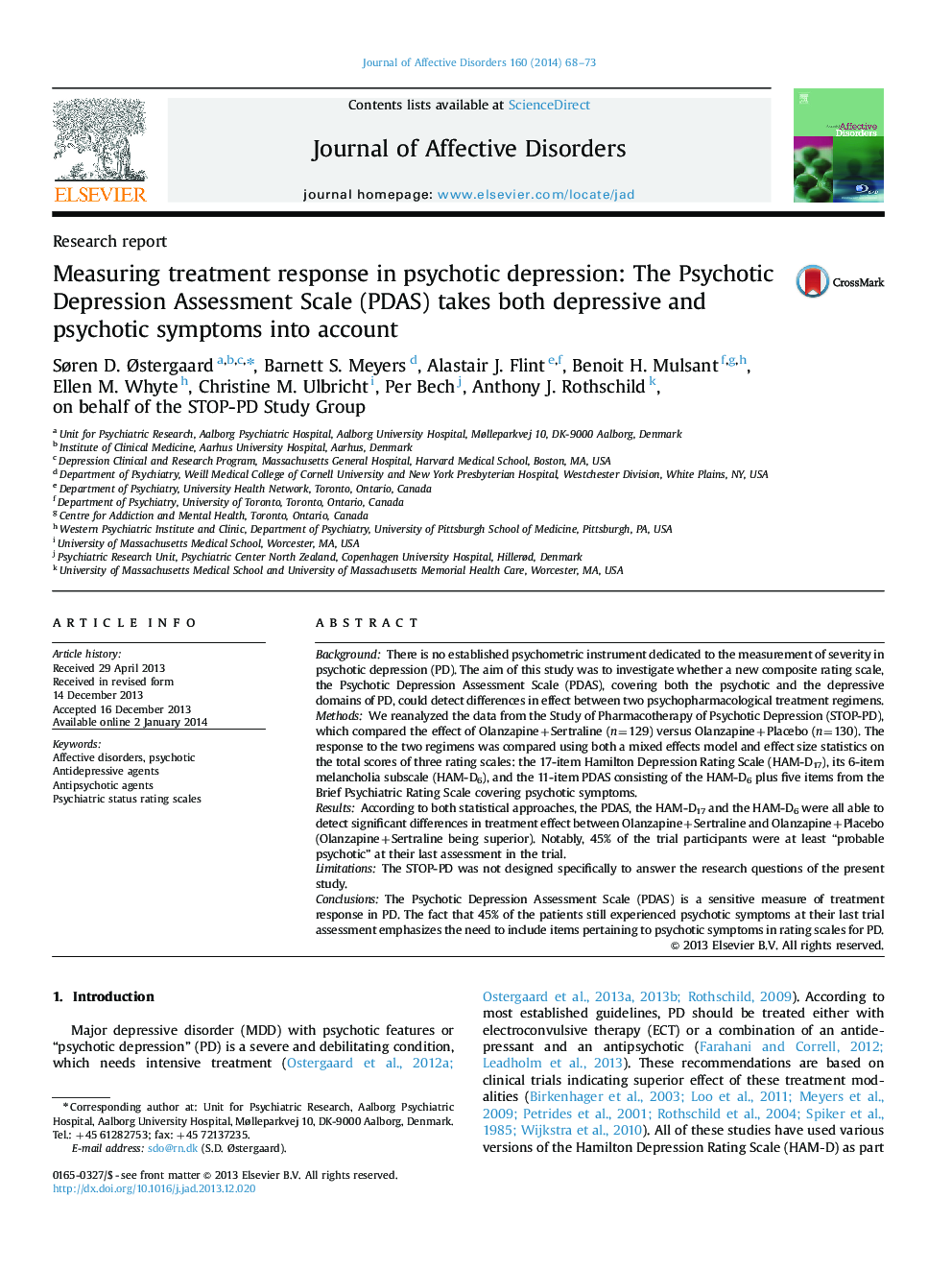| کد مقاله | کد نشریه | سال انتشار | مقاله انگلیسی | نسخه تمام متن |
|---|---|---|---|---|
| 6232611 | 1608165 | 2014 | 6 صفحه PDF | دانلود رایگان |

BackgroundThere is no established psychometric instrument dedicated to the measurement of severity in psychotic depression (PD). The aim of this study was to investigate whether a new composite rating scale, the Psychotic Depression Assessment Scale (PDAS), covering both the psychotic and the depressive domains of PD, could detect differences in effect between two psychopharmacological treatment regimens.MethodsWe reanalyzed the data from the Study of Pharmacotherapy of Psychotic Depression (STOP-PD), which compared the effect of Olanzapine+Sertraline (n=129) versus Olanzapine+Placebo (n=130). The response to the two regimens was compared using both a mixed effects model and effect size statistics on the total scores of three rating scales: the 17-item Hamilton Depression Rating Scale (HAM-D17), its 6-item melancholia subscale (HAM-D6), and the 11-item PDAS consisting of the HAM-D6 plus five items from the Brief Psychiatric Rating Scale covering psychotic symptoms.ResultsAccording to both statistical approaches, the PDAS, the HAM-D17 and the HAM-D6 were all able to detect significant differences in treatment effect between Olanzapine+Sertraline and Olanzapine+Placebo (Olanzapine+Sertraline being superior). Notably, 45% of the trial participants were at least “probable psychotic” at their last assessment in the trial.LimitationsThe STOP-PD was not designed specifically to answer the research questions of the present study.ConclusionsThe Psychotic Depression Assessment Scale (PDAS) is a sensitive measure of treatment response in PD. The fact that 45% of the patients still experienced psychotic symptoms at their last trial assessment emphasizes the need to include items pertaining to psychotic symptoms in rating scales for PD.
Journal: Journal of Affective Disorders - Volume 160, May 2014, Pages 68-73